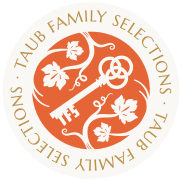

Saget La Perrière Nine Generations of Winemaking in the Loire Valley

The Saget family are indelibly woven into the expansive tapestry of the Loire Valley — and it has been so for nine generations. Their roots in the village of Pouilly-sur-Loire date all the way back to 1790, when they planted their first vines in the hamlet of Le Bouchot. They couldn’t have known then that they would carry that hopeful, viticultural torch through nearly three successive centuries.
The pull toward innovation comes naturally to the Sagets, as evidenced by the flashes of invention punctuating their history. During the 1920s, they became one of the first local bottlers; later, in the 1960s, the family pivoted their marketing strategy to focus on selling what they bottled. Ever conscious of the vine-grower spirit, they embarked on a mission to showcase the Loire’s beauty beyond Pouilly-sur-Loire in the 1980s. New grower relationships were forged and estates across the whole of the Loire were added to the Saget fold — thus making them the first (and to date, still the only) family to have a winemaking presence across all four Loire subregions of Muscadet, Anjou, Touraine, and Centre-Loire.
In 1996, Jean-Louis Saget acquired Clos de La Perrière, one of Sancerre’s oldest and most prestigious estates where a vast, ancient limestone cave would provide the backdrop for the launch of the family’s very own estate production — signaling a whole new, intrepid chapter. With such revered terroir underfoot, Jean-Louis then set out to showcase the great aging potential of white Sancerre, particularly from the flinty silex soils in the Les Royeux vineyard, and created the iconic cuvée, “Mégalithe.”
Jean-Louis’ sons, Arnaud and Laurent, are leading Saget La Perrière today, with Arnaud managing the business side and Laurent overseeing winemaking. The brothers have brought their vision of varietally focused wines to life and have also introduced the La Petite Perrière range — one of the first-ever wines released under the Vin de France designation and the No. 1 imported French Sauvignon Blanc in the U.S.* Along with their exciting foray into enotourism (their hotel, Le Panoramic, boasts an elegantly modern space for breakfast, a wine bar called Taste, and breathtaking views of Sancerre), this generation of Sagets is clearly intent on taking their name, and Loire Valley wines, to even greater heights.
* Nielsen Ttl US xAOC + Liquor 52 Weeks ending 12/30/23
Expressing the Loire from East to West
Perhaps no other family in the region encapsulates the Loire’s myriad nuances like the Sagets — from the chalky-limestone soils of Sancerre in the east to the Atlantic-buffeted granite and gneiss soils of Muscadet in the west. Their properties form an unprecedented collection across the entire valley, spanning a variety of complex terroirs across 230 hectares / 569 acres of vines.

Terroir
To capture the Saget family’s terroir totality would be impossible in short space; however, in brief:
Their historic home turf is in the Centre-Loire département of Pouilly-sur-Loire, where their 55 hectares / 136 acres of vines are spread across the hilly, highly prized localities largely composed of calcareous clay and Kimmeridgian (“terre blanches”) marl soils. Across the river in Sancerre at Domaine de la Perrière, the family hold 43 hectares / 106 acres of vineyards in the districts of Bannay, Verdigny, Saint-Satur, Crézancy, and Vinon. These terroirs are where sauvignon blanc best expresses its powerful mineral backbone, with the flinty silex soils helping to create powerful wines of impressive aging potential.
In Touraine, the terroir of Chinon is gravel- and clay-sand based, rich in what the locals describe as “tuffeau jaune,” a yellowish rock made from a combination of sand and fossils over 90 million years ago. It is highly porous, absorbing water rapidly but disseminating it slowly — ideal for high-quality viticulture. In Vouvray, the soils are flint- and limestone-clay based, lying atop a base of limestone tuffeau.
Coastal Muscadet, in the far-west region of Pays Nantais, enjoys a strong Atlantic influence with cooling breezes, plenty of rain, and varied igneous soils from the Armorican Massif (including gneiss, mica, greenstone rock, and granite).
The Cave of Saget la Perrière
The La Perrière cave is a marvel to behold, greeting visitors with a lush cascade of vegetation (there are 6 hectares / 15 acres of vines growing on top). Then, its cool, cavernous depths beckon the curious to descend ...
The rock formation itself dates to the Jurassic Period, 150+ million years ago, and was carved out by rushing water currents in the Tertiary Period when the sea retreated some 60 million years ago. Thanks to the dense composition of the solid limestone — and the stalwart determination of the Saint-Benoît monks — the foundations of the nearby Saint-Satur collegiate church and Bourges cathedral were built in the 14th century. These stone-carving monks also used the cave as a mushroom farm and later, for winemaking.


















